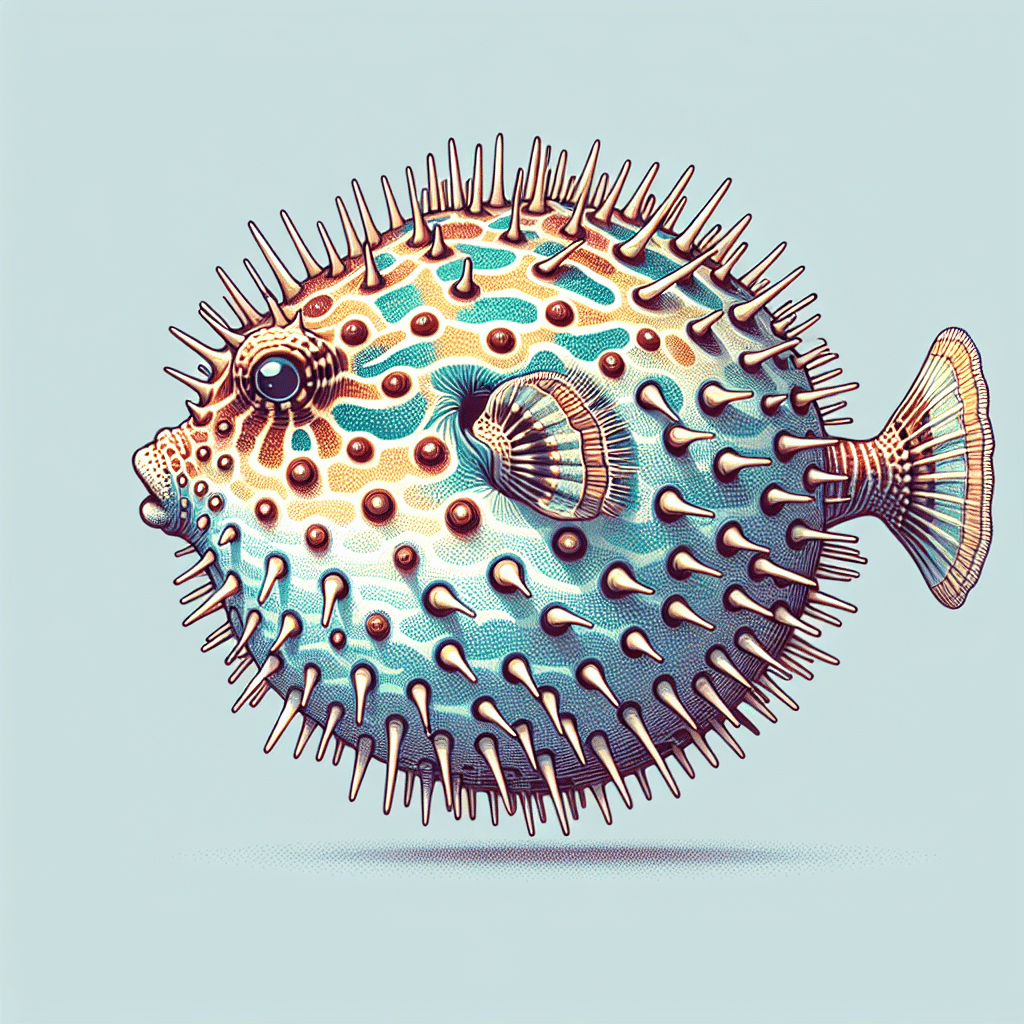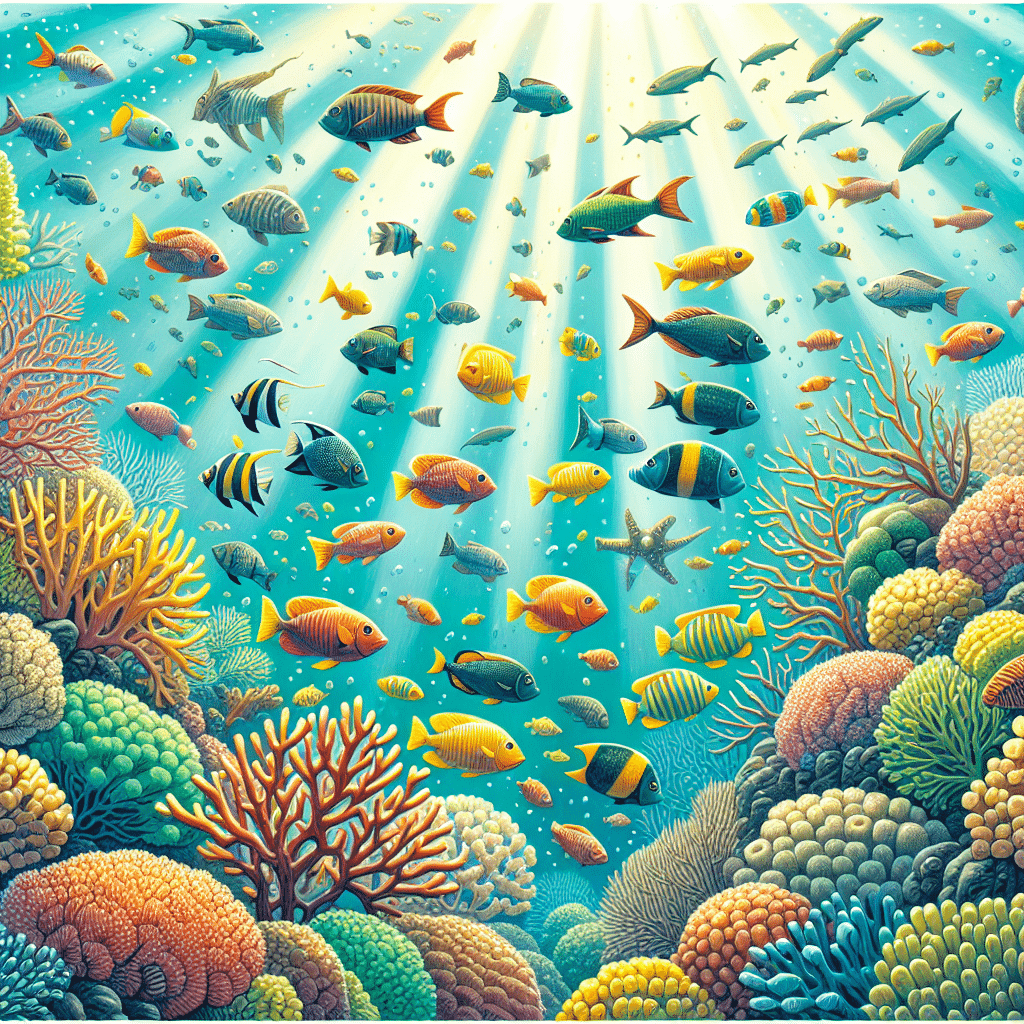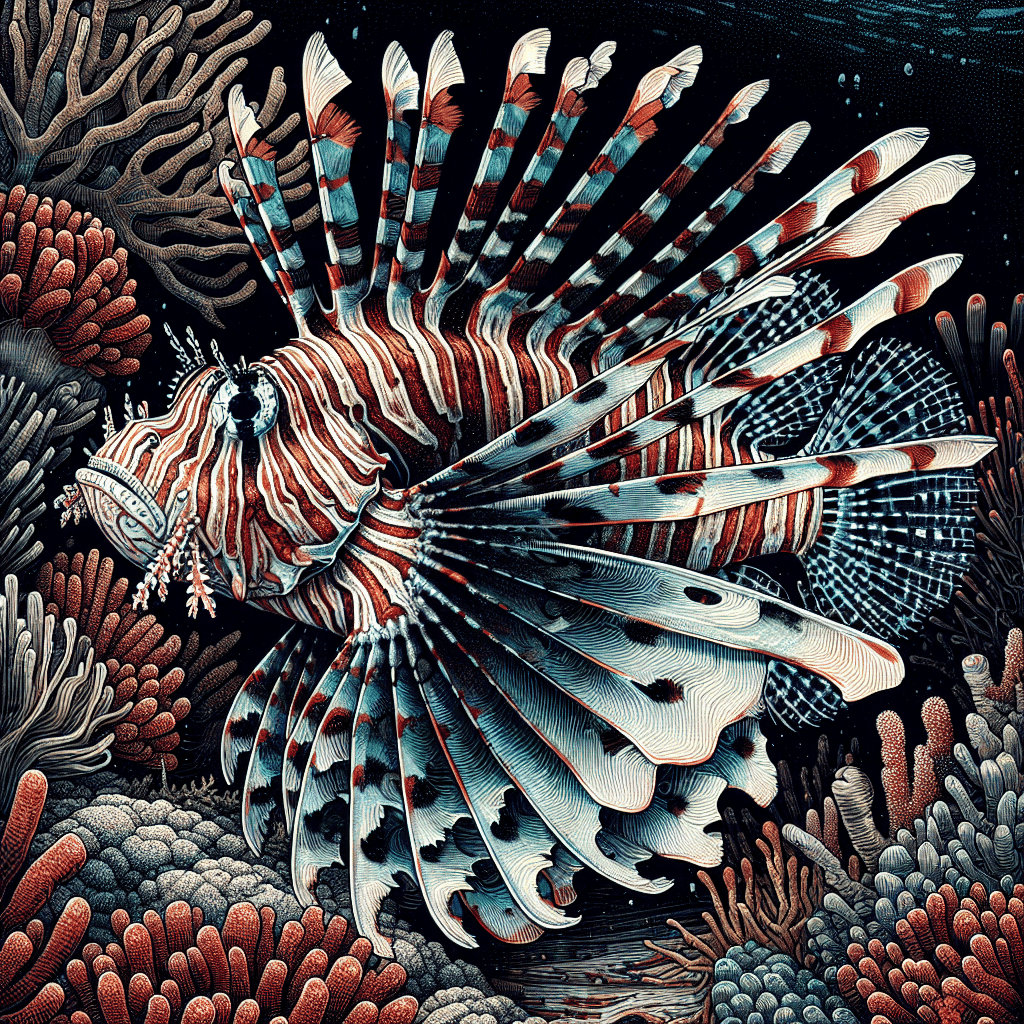Understanding Pufferfish
Pufferfish, often referred to as blowfish, are not just fascinating creatures; they have some of the most unique defensive mechanisms in the animal kingdom. Understanding how they protect themselves and their toxic nature is essential for anyone interested in these intriguing fish.
Pufferfish Defensive Mechanism
One of the most remarkable features of pufferfish is their ability to inflate themselves into a ball shape. This inflation occurs when they fill their elastic stomachs with large amounts of water (or air when on land), allowing them to expand to several times their normal size (National Geographic Kids). This defensive mechanism serves as a deterrent to predators, making it difficult for them to swallow the pufferfish.
In addition to inflation, pufferfish possess pointed spines that protrude from their bodies when they are inflated. This combination of size and spines sends a clear warning to potential threats, indicating that they are not an easy meal. If a predator does attempt to consume a pufferfish, it may encounter a lethal surprise—tetrodotoxin (TTX). This potent toxin is found within the pufferfish and can cause severe harm, even death, to those who ingest it.
| Defensive Mechanism | Description |
|---|---|
| Inflation | Filling stomach with water or air to increase size |
| Pointed Spines | Physical deterrent that makes them harder to consume |
| Tetrodotoxin | Lethal toxin that can kill predators |
Toxicity in Pufferfish
Most pufferfish contain a toxic substance that not only makes them foul tasting but can also be deadly to other fish and even humans. In fact, a single pufferfish has enough poison to potentially kill 30 adult humans, and there is no known antidote for the toxin. This toxicity is a crucial part of their survival strategy, as it discourages predators from attempting to eat them.
Interestingly, pufferfish larvae can also produce TTX on their skin, which serves as an additional chemical defense against predation. This mechanism ensures that even the youngest pufferfish have a means to protect themselves from threats (Wikipedia).
Understanding these defensive traits is vital for anyone keeping pufferfish in their aquarium or reef tank. Not only do they require specific care, but knowing about their toxicity can help prevent dangerous encounters with other marine life or even humans. For more information on other fascinating marine species, check out our articles on marine fish such as the lionfish and triggerfish.
Pufferfish Species
Variety of Pufferfish
I find pufferfish, also known as blowfish, to be some of the most fascinating creatures in the ocean. There are about 200 species of pufferfish worldwide, categorized into 39 different genera. These unique fish vary significantly in size and appearance. For example, the smallest pufferfish is only about an inch long, while the largest can grow up to 3 feet! Here’s a quick look at some notable species:
| Species Name | Size | Habitat Type |
|---|---|---|
| Dwarf Puffer | 1 inch | Freshwater |
| Northern Puffer | Up to 10 inches | Marine (Eastern U.S. coast) |
| Freshwater Giant Puffer | Up to 2 feet | Freshwater (South America) |
| Valentini Puffer | 4-6 inches | Marine (Tropical waters) |
These puffers are generally scaleless, sporting rough to spiky skin. Their diet primarily consists of invertebrates and algae, which they can easily crush with their unique beak-like teeth.
Distribution and Habitat
Pufferfish are primarily found in warm, shallow tropical and subtropical ocean waters, but their habitats aren’t limited to just the sea. Some species thrive in brackish water and there are even 35 species that live exclusively in freshwater environments, mainly in regions like South America, Africa, and Southeast Asia (Earth.com).
The Northern Puffer is particularly interesting because it inhabits the Eastern Seaboard of the U.S. and can be found as far north as Newfoundland, Canada. Unlike many other pufferfish, it does not produce tetrodotoxin, making it safer for human consumption (Earth.com).
In terms of reproduction, male pufferfish are known to create stunning, geometric patterns in the sand as nests to attract potential mates. These behaviors and characteristics make them a captivating choice for any aquarium enthusiast looking to add some diversity to their tank. If you’re interested in other marine fish for your reef tank, check out our articles on marine fish and various other species.
Pufferfish Behavior
Pufferfish, also known as blowfish, exhibit some fascinating behaviors that set them apart from other marine creatures. Understanding these unique characteristics and their defense strategies can enhance the experience for anyone interested in keeping them in a reef tank.
Unique Characteristics
One of the most remarkable traits of pufferfish is their ability to inflate. They have an extremely elastic stomach that allows them to fill it with water or air when threatened, making them appear much larger and almost spherical. This inflation serves as a natural defense mechanism, deterring potential predators.
| Characteristic | Description |
|---|---|
| Inflation | Can fill stomach with water/air to increase size |
| Spines | Pointed spines protrude when inflated, deterring predators |
| Toxicity | Contains tetrodotoxin (TTX), a potent toxin that can be lethal to predators (and humans) if ingested |
Pufferfish also possess a secondary line of defense. As larvae, they are known to release TTX from their skin, causing would-be predators to spit them out. This chemical defense is an effective strategy that further increases their survival chances in the wild (Wikipedia).
Defense Strategies
Pufferfish utilize several strategies to protect themselves from predators. The inflation mechanism is their primary defense, but they also benefit from their pointed spines. These spines become more prominent when they inflate, making them less appealing as prey.
When it comes to their toxicity, pufferfish have a significant advantage. The TTX present in their bodies can pose a serious threat to creatures that attempt to eat them. This toxin is not only dangerous for fish but can also be lethal to humans, making knowing about their care essential for fish tank hobbyists.
| Defense Strategy | Description |
|---|---|
| Inflation | Increases size to deter predators |
| Pointed Spines | Makes consumption difficult and painful |
| Toxicity | Contains lethal TTX to discourage predation |
By understanding these behaviors and defense mechanisms, I can better appreciate my pufferfish and create an environment in my tank that respects their unique needs. If you’re looking for more information about caring for various fish species, check out our articles on marine fish, lionfish, and clownfish.
Pufferfish and Human Interaction
Culinary Delicacy
I find it fascinating how pufferfish, also known as blowfish, have made their way into high-end cuisine, particularly in Japan where they are called fugu. Fugu is considered a luxurious delicacy, but it comes with a hefty price tag and an even heftier responsibility. Only trained and licensed chefs are allowed to prepare it. These chefs undergo a rigorous training process that can last two to three years, culminating in a challenging licensing exam. It’s a big deal because mishandling the fish can lead to fatal consequences.
The meat of fugu is not just expensive; it’s a culinary experience that many adventurous eaters seek. In China, for example, packaged farmed fugu can cost around CN¥330 (about US$50) per kilogram, but it’s only sold in a processed form to ensure safety (Wikipedia).
| Region | Price per kg (US$) | Preparation Requirements |
|---|---|---|
| Japan | Varies (very expensive) | Prepared by licensed chefs |
| China | 50 | Processed, without organs |
Risks and Precautions
Despite its appeal, consuming pufferfish is not without risks. The primary concern is its toxicity. Pufferfish contain tetrodotoxin, a potent neurotoxin that can cause paralysis and even death if ingested. This toxin is present in various parts of the fish, making it imperative that only trained chefs handle the preparation (Two Fish Divers).
For anyone considering trying fugu, it’s crucial to ensure that it is sourced from a reputable provider and prepared by a qualified chef. Even with these precautions, there’s always a level of risk involved. Interestingly, researchers at Nagasaki University have made strides in culturing non-toxic torafugu by controlling their diet, allowing for safer consumption in the future (Wikipedia).
In summary, while the allure of pufferfish as a delicacy is undeniable, the potential dangers should not be overlooked. If you’re a fish tank or reef tank enthusiast, it’s essential to understand both the culinary and ecological aspects of these fascinating creatures. For more information on keeping various marine fish, check out our section on marine fish.
Pufferfish Conservation
Conserving pufferfish is essential for maintaining the balance of marine ecosystems. Understanding the threats they face helps me appreciate the importance of conservation efforts.
Threats to Pufferfish
Pufferfish species encounter various threats that can impact their populations. Some of the main challenges include:
| Threat | Description |
|---|---|
| Pollution | Contaminants in water can harm pufferfish and their habitats. |
| Habitat Loss | Coastal development and destruction of ecosystems reduce available habitats. |
| Overfishing | Unsustainable fishing practices can deplete pufferfish populations. |
While most pufferfish populations are considered stable, certain species are classified as vulnerable due to these factors (National Geographic Kids). Additionally, some pufferfish inhabit brackish waters or exclusively freshwater environments, primarily in regions like South America, Africa, and Southeast Asia.
Conservation Efforts
Efforts to protect pufferfish involve a combination of regulations and community initiatives. Here are some key strategies:
| Conservation Strategy | Description |
|---|---|
| Marine Protected Areas | Designated regions where fishing and habitat destruction are restricted. |
| Sustainable Fishing Practices | Encouraging responsible fishing methods to prevent overfishing. |
| Public Awareness Campaigns | Educating communities about the importance of pufferfish conservation. |
By supporting these efforts, I can contribute to the protection of pufferfish and their habitats. Awareness of their ecological role and the threats they face can foster a greater commitment to conservation. For those in the aquarium hobby, maintaining a healthy environment for marine fish like pufferfish is crucial. Exploring species such as the valentini puffer can also be a delightful way to appreciate their unique traits while ensuring their well-being.
Pufferfish in Popular Culture
Pufferfish, known for their unique appearance and toxicity, have carved a niche for themselves in popular culture, especially in culinary practices and artistry. Here’s a closer look at two significant aspects: Fugu in Japan and the artistry surrounding pufferfish.
Fugu in Japan
In Japan, pufferfish are referred to as fugu, and they are considered a luxurious culinary treat. However, this delicacy comes with significant risks. The preparation of fugu is not something just anyone can do; it requires a trained and licensed fugu chef. The process to earn this license can take two to three years, during which the apprentice learns the intricate details of preparing and serving fugu safely. The licensing examination includes a written test, a fish-identification test, and practical assessments of preparing and consuming the fish. Astonishingly, only about 35 percent of applicants pass the exam, highlighting the seriousness of miscalculations in this craft. A small error could lead to dire consequences, including death (Wikipedia).
Fugu contains lethal amounts of the toxin tetrodotoxin, primarily found in certain organs like the liver, ovaries, and skin. This poison can paralyze muscles while leaving the victim fully conscious, leading to a terrifying fate of asphyxiation. There is no known antidote for fugu poisoning, making the skill of the chef all the more critical (Two Fish Divers). Despite these dangers, the thrill and taste of fugu make it a sought-after dish among adventurous diners.
| Fugu Facts | Details |
|---|---|
| Preparation Time | 2-3 years |
| Pass Rate of Licensing Exam | 35% |
| Main Toxic Compound | Tetrodotoxin |
| Cost (China, 2023) | CN¥330 (US$50) per kilogram (Wikipedia) |
Pufferfish Artistry
Beyond the kitchen, pufferfish have also inspired various forms of artistry. Their unique shape and texture have made them popular subjects in crafts and decorations. Artists create intricate designs using pufferfish skin and parts, turning them into ornaments, lamps, and other decorative pieces. These creations often celebrate the fish’s distinctive look and serve as a reminder of the beauty and danger that pufferfish represent.
Incorporating pufferfish into art highlights not only their physical characteristics but also their cultural significance. From traditional Japanese crafts to modern artistic interpretations, pufferfish continue to enchant and intrigue people across different cultures.
For those of us who appreciate the beauty of marine life, pufferfish serve as a fascinating subject that bridges culinary arts and craftsmanship. Whether through the careful preparation of fugu or the creation of pufferfish-inspired art, these fish hold a special place in both the kitchen and the art world. If you’re interested in more about marine life, check out our section on marine fish.
Interesting Facts about Pufferfish
Geometric Nests
One of the most fascinating aspects of certain pufferfish species is their unique nesting behavior. Male pufferfish, particularly the species Torquigener albomaculosus, create stunning geometric patterns in the sand as part of their mating ritual. These intricate designs serve to attract potential mates and have earned the admiration of many, including naturalist David Attenborough, who called them “the greatest artist of the animal kingdom” (Wikipedia).
The nests consist of carefully arranged sand that showcases the males’ artistic abilities. This behavior is not only intriguing but also essential for their reproduction. The geometric nests can vary in complexity, and they are a remarkable example of how behavior can impact mating success in the animal kingdom.
| Pufferfish Species | Nest Design Complexity |
|---|---|
| Torquigener albomaculosus | High |
| Other species | Varies |
Toxicity Comparison
Pufferfish are well-known for their toxicity, primarily due to a potent toxin called tetrodotoxin. This toxin is incredibly dangerous; it is estimated to be 1,200 times more lethal than cyanide, making pufferfish one of the most poisonous vertebrates on the planet. A single pufferfish can contain enough tetrodotoxin to kill 30 fully grown humans (Earth.com; Two Fish Divers).
Here’s a quick comparison of the toxicity levels of pufferfish versus other known toxins:
| Toxin | Relative Toxicity (compared to tetrodotoxin) |
|---|---|
| Tetrodotoxin | 1x |
| Cyanide | 1/1200x |
| VX Nerve Agent | 100x |
| Ricin | 6x |
This table highlights just how formidable the pufferfish’s defense mechanisms are, making it crucial for hobbyists and aquarists to handle them with care. Understanding the risks associated with pufferfish is essential for anyone interested in keeping these unique creatures in their marine fish tanks.
Pufferfish Quirks
Pufferfish Behavior
Pufferfish are fascinating creatures with some unusual behaviors that make them stand out in the aquarium world. One of their most notable behaviors is their ability to inflate themselves. When threatened, they can fill their elastic stomachs with water or air, transforming into a larger, almost spherical shape. This inflation, combined with their pointed spines, makes them less appealing to potential predators.
Another interesting trait is their ability to move their eyes independently. This unique feature allows them to have a wider field of vision while remaining vigilant for threats. Additionally, pufferfish can change the color and intensity of their patterns in response to environmental changes, similar to how chameleons adapt. Some species have bright colors and distinctive markings, which serve as a warning to predators about their toxicity.
Human Encounters
Pufferfish are not just intriguing in their natural habitats; they also capture the interest of humans. There have been reports of dolphins expertly handling pufferfish, seemingly to induce a trance-like state or intoxication. This behavior showcases the intelligence and playfulness of dolphins, as they engage with these potentially dangerous fish in a non-threatening manner.
In the aquarium setting, pufferfish can be quite entertaining to watch. Their quirky personalities and playful nature often win over hobbyists. However, it’s essential to be cautious when caring for them, as they can be aggressive towards other fish. Proper tank mates include species that can coexist without getting nipped at or harassed. For more information about compatible species, check out our articles on marine fish, lionfish, and triggerfish.
As a pet owner, I always find myself mesmerized by their antics. Whether it’s watching them inflate or observing their curious nature, pufferfish definitely add a unique charm to any reef tank. If you’re considering adding one to your setup, be sure to research their care requirements to ensure a healthy and happy environment.



